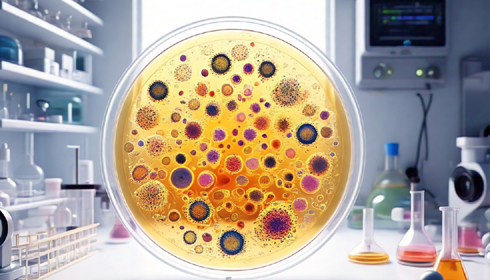
Nanostructured Alumina Surfaces Can Prove to be Game Changer in Antibacterial Cell Culture
A research team from Tokyo Metropolitan University, led by Professor Takashi Yanagishita, has successfully constructed nanostructured anodic porous alumina (APA) surfaces. These surfaces have significant antibacterial characteristics and support the growth of living cells. This dual ability offers a possible way to use regenerative medicine by reducing the need for antibiotics and possibly preventing the growth of microorganisms that are resistant to antibiotics.
Surfaces that resist bacterial contamination are crucial in a variety of industries, including healthcare, food safety, and biotechnology. Traditionally, industries have employed antibiotics and chemical treatments to combat bacterial contamination. However, overreliance on these technologies has prompted concerns about their environmental impact, health risks, and the spread of antibiotic-resistant bacterial strains. As a result, there is an urgent need for alternate, sustainable antibacterial techniques.
Nanostructured surfaces have emerged as a possible option. In the early 2010s, researchers discovered that naturally occurring nanostructures on the wings of cicadas and dragonflies had high antibacterial characteristics. These nanostructures physically disrupt bacterial membranes, stopping bacterial growth. Scientists have been working to create artificial surfaces that imitate this antibacterial function in response to these natural events.
At Tokyo Metropolitan University, researchers focused on anodic porous alumina, a substance created by dipping polished aluminium into an electrochemical cell under certain conditions. This method results in a highly organised array of porous alumina pillars covering the surface. These needle-like nanostructures have the ideal size and form to effectively destroy germs.
Researchers have made their method better by adding concentrated sulphuric acid to the electrochemical process. This makes the APA surfaces more antibacterial. Surprisingly, while these coatings killed bacteria, they did not harm grown biological cells. This distinct feature distinguishes APA surfaces from other antibacterial coatings, which frequently kill both bacterial and mammalian cells.
One of the key uses of this discovery is in regenerative medicine, which involves the growing of cells for therapeutic use. Currently, cell cultures are extremely vulnerable to bacterial infection, necessitating the use of antibiotics in culture media. This technique has significant disadvantages, including low efficiency against antibiotic-resistant bacteria and the potential of developing further resistance.
The APA surfaces created by the Tokyo Metropolitan University team provide a solution to this challenge. By letting cell cultures grow without antibiotics, these surfaces lower the chance that bacteria will get on them and get rid of the selective pressure that helps bacteria become resistant to antibiotics.
"Our findings open up new possibilities for antibiotic-free cell culture," Professor Yanagishita explained. "This could lower costs, broaden access to sterile environments, and enhance the safety of cell-based therapies."
The potential applications of APA surfaces go beyond regenerative medicine. Hospitals could employ these surfaces in medical devices and implants to prevent bacterial infection. Sterile settings are critical for reducing hospital-acquired infections, which can result in serious consequences in patients with weaker immune systems.
Furthermore, the usage of APA surfaces in scientific research laboratories may increase the dependability of experimental outcomes. Currently, researchers frequently encounter the difficulty of bacterial contamination during long-term cell culture experiments. The use of antimicrobial surfaces might simplify laboratory methods while improving experimental reproducibility.
The revelation has substantial environmental and economic ramifications. Reduced reliance on antibiotics in cell cultures may lessen the environmental impact of antibiotic manufacture and disposal. Furthermore, APA surfaces may lower the operational costs of maintaining sterile conditions in laboratories and healthcare settings.
This method has the potential to make high-quality cell cultures more accessible by reducing the need for antibiotics and specialised sterile settings. This low-cost antibacterial technology could benefit smaller laboratories and medical facilities that do not have the resources to invest in pricey sterile infrastructure.
Looking ahead, the team intends to improve the fabrication method to increase the scalability and endurance of APA surfaces. Collaborations with industry partners could facilitate the commercial production of goods derived from APA. Scientists are also looking into whether similar nanostructuring methods can be used on other materials. This would allow for a wider range of antibacterial uses.
Finally, the creation of nanostructured anodic porous alumina surfaces is a big step forward in the search for antibacterial solutions that don't use antibiotics. This breakthrough, with applications ranging from regenerative medicine to healthcare and scientific research, has the potential to play a critical role in eliminating bacterial pollution while protecting human health and the environment.
Keywords:
Meta Description: